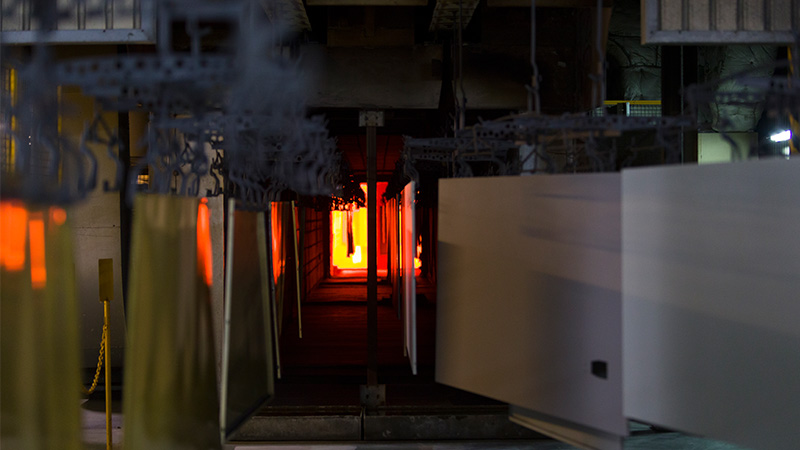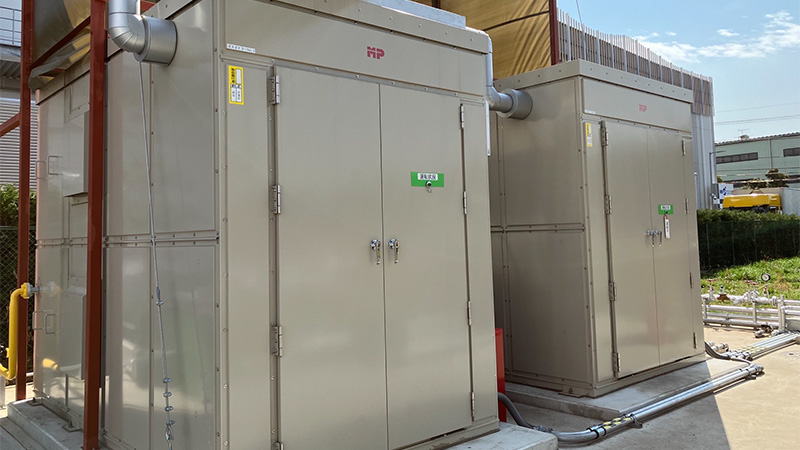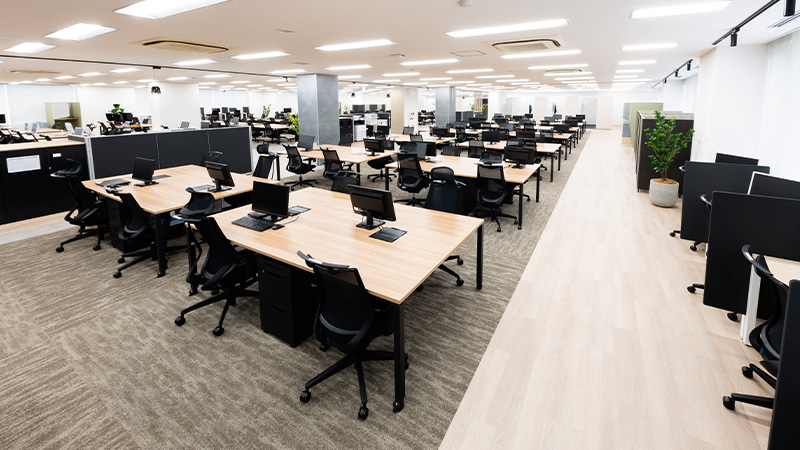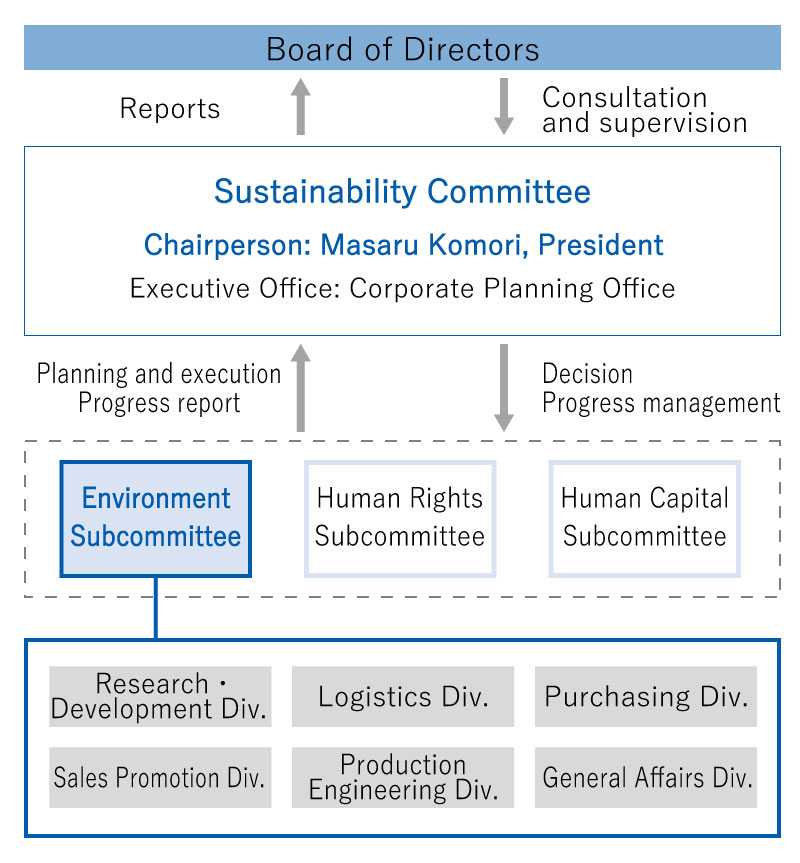Environment Initiatives
Environmental Policy
Takara Environmental Policy
Takara standard considers environmental protection a priority issue in management. We strive to reduce the environmental impact of our business activities and have initiatives to protect the environment and prevent pollution in order to contribute to the realization of sustainable society.
- We develop products and services with low environmental impact.
- We have initiatives to reduce environmental impact in all business activities.
- In addition to complying with environmental laws and regulations, we take on environmental problems in response to society’s demands.
Target for CO2 Reduction
- CO2 emission reduction target for FY2026
- Reduction of 15% from FY2020 level
- CO2 emission reduction target for FY2030
- Reduction of 30% from FY2020 level
Initiatives to Reduce CO2 Emissions in Business Activities
Installation of energy-saving equipment at production bases, conversion of fuels

At the factories of enameled products, the baking furnaces used in the manufacturing
process consume a lot of energy. Initiatives to reduce energy consumption include
increasing the use of high-heat insulators and reusing the waste heat from baking
furnaces.
We are also striving to reduce gas consumption and CO2 emissions by replacing gas
burners for the baking furnaces with energy-saving ones to improve combustion
efficiency.

At the Kanto Factory, where resin products are manufactured, we are switching from
electric boilers to gas boilers as the heat source of facilities used in the
manufacturing process of resin products.
This initiative is reducing energy consumption and CO2 emissions.
Installation of energy-saving equipment at our offices

At our business offices, factories, distribution centers, and other bases, we are switching to LED lights and installing high-efficiency air conditioners.
TCFD-Based Information Disclosure
Governance and risk management
The Environment Subcommittee, a subordinate organization of the Sustainability Committee chaired by the President, is responsible for identifying and analyzing risks and opportunities related to environmental issues, particularly climate change, as well as considering issues and countermeasures.
The Subcommittee, chaired by the General Manager of the Corporate Planning Office, meets at least four times a year to discuss responses to TCFD recommendations, progress of strategies and indicators, and consistency with management plans, and submits a report to the Sustainability Committee at least twice a year. It also reports to the Board of Directors through the Sustainability Committee.
The Corporate Planning Office, the secretariat of the Subcommittee, operates the Subcommittee and coordinates with company divisions in responding to the TCFD recommendations and monitoring these responses. The Office also uses scenario analysis to identify the risks and opportunities that arise from climate change, considers responses, and makes suggestions and reports to the Environmental Subcommittee.

Roles and Members of the Organization
Environmental Subcommittee
| Members | Subcommittee Chairperson | General Manager, Corporate Planning Office |
|---|---|---|
| Participating Divisions | Research Div., Development Div., Production Engineering Div., Logistics Planning Div., Purchasing Div., Sales Promotion Div., General Affairs Div. | |
| Secretariat | Corporate Planning Office | |
| Activities | Regular meetings | Four times a year (once every three months) |
| Agenda | Identification and assessment of risks and opportunities, establishment of strategies, setting goals, development and implementation of action plans, progress management |
Strategy
Transition risk(less than 1.5℃ scenario)
| Category | Scenario | Risk | Impact | Opportunity | Impact |
|---|---|---|---|---|---|
| Policies/ regulations | Introduction of carbon tax | Increased manufacturing costs and selling expenses due to increased procurement costs of materials and energy | Large | - | - |
| Stricter regulations on forest environment | Increased manufacturing costs due to increased difficulty and cost of procuring wood | Large | - | - | |
| Markets/ technologies |
Progression in divestment and revision of business portfolio toward
decarbonization in the petrochemical and iron and
steel industries steel industries
|
Increased manufacturing costs due to increased difficulty and cost of procuring steel, resin, and wood | Large | - | - |
| Diversifying needs for wood | - | - | |||
| Change in behavior of regular clients and consumers Preference for products with water- or energy-saving features, or longer service life |
- | - | Higher presence of enameled products, etc. due to ease of maintenance and longer service life | Medium | |
| Change in behavior of regular clients Preference for materials that emit less GHG in the manufacturing process |
Risk of decreasing need for products that emit larger amount of GHG in the manufacturing process | Medium | Increased need for wooden products | Medium |
Physical risk(4℃ scenario)
| Category | Scenario | Risk | Impact | Opportunity | Impact |
|---|---|---|---|---|---|
| Chronic | Increased risk of heatstroke due to higher temperatures | A certain amount of impact will occur, although the work environment is not in direct sunlight | Medium | - | - |
| Acute | Increased severity and frequency of abnormal weather | Shutdown due to a disaster Supply chain interruption due to a disaster |
Small | Higher presence of our strong supply structure in the face of the increased risk
of a disaster (Supply was not interrupted at the time of the large earthquakes in 2011) |
Large |
Main initiatives to address the environmental problems
| Aim | Responses |
|---|---|
| Reduction of GHG emissions | Installing solar panels, driving a modal shift (greater use of green shipping and trains) |
| Enhancing resilience in the case of a weather-related disaster | Carrying out ongoing BCP initiatives such as decentralizing manufacturing and logistics bases and ensuring sufficient inventory |
| Saving resources in packaging materials | By using the minimum amount of packaging, saving resources, reducing waste, and improving efficiency of transportation and unpacking |
Indexes and Targets
The calculated amount of GHG emissions of the Company (Scope 1+2) and its reduction target are shown below. To contribute to the realization of a decarbonized society, we are considering concrete reduction measures.
| Results | Target | ||||||
|---|---|---|---|---|---|---|---|
| FY2020 | FY2021 | FY2022 | FY2023 | FY2024 | FY2026 | FY2030 | |
| Scope1+2 | 57,462 tCO2 | 60,178 tCO2 | 61,763 tCO2 | 58,828 tCO2 |
51,504 tCO2 ( -10% from FY2020 level ) |
49,000 tCO2 ( -15% from FY2020 level ) |
41,000 tCO2 ( -30% from FY2020 level ) |
* The amount of GHG emissions is calculated based on the “Greenhouse Gas Emissions Calculation and Reporting Manual,” published on the website of the Ministry of the Environment.








